- 132
- 135shares
- Like
- X
- Digg
- Tumblr
- VKontakte
- Buffer
- Love This
- Odnoklassniki
- Meneame
- Blogger
- Amazon
- Yahoo Mail
- Gmail
- AOL
- Newsvine
- HackerNews
- Evernote
- MySpace
- Mail.ru
- Viadeo
- Line
- Comments
- SMS
- Viber
- Telegram
- Subscribe
- Facebook Messenger
- Kakao
- LiveJournal
- Yammer
- Edgar
- Fintel
- Mix
- Instapaper
- Copy Link
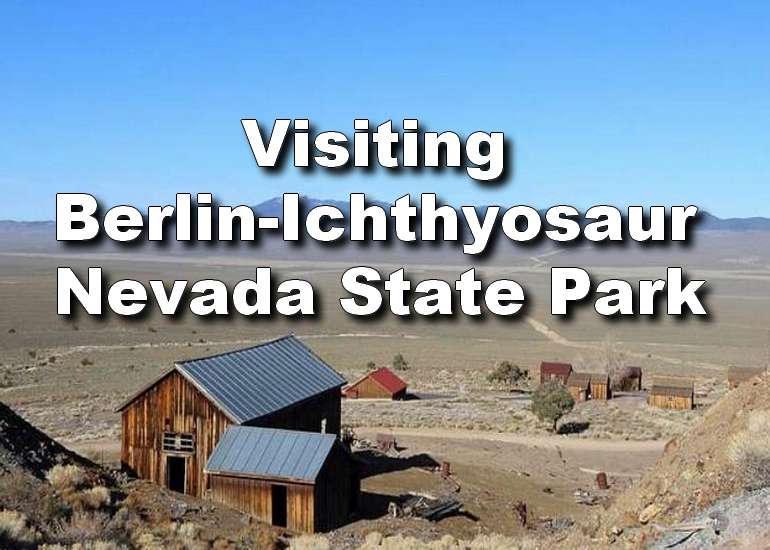
Berlin-Ichthyosaur State Park is about 170 miles from Reno-Sparks, in a relatively remote stretch of desert overlooking Nevada’s Ione Valley. This Nevada Park is a great place to learn about the history of the Silver State. With two ghost towns and the remains of millions of years-old creatures, there is nowhere like Berlin-Ichthyosaur State Park. The Park includes a protected bedrock surface containing several giant ichthyosaurs’ bones — a fish-like marine reptile from the Mesozoic era.
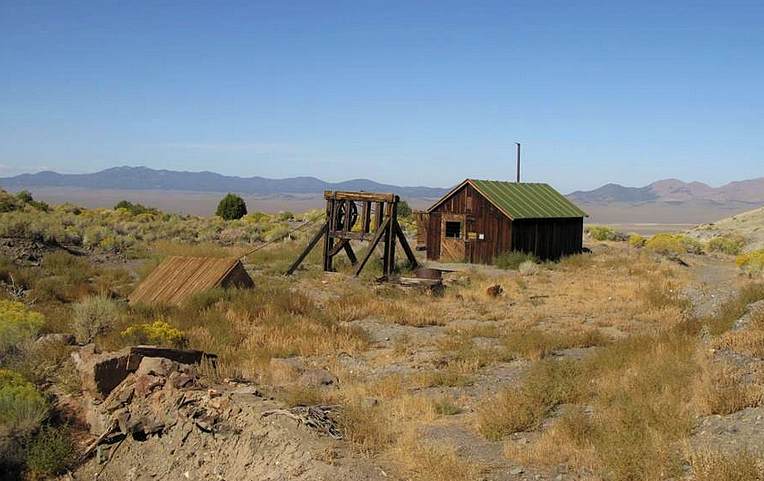
The Ghost Town of Berlin, Nevada
The Park preserves the ghost town of Berlin, a mining settlement that emerged in 1896 after nearby gold veins were discovered. At its peak around 1908, Berlin and the nearby suburb of Union had a population of 200 to 250, including miners and woodcutters. The Berlin Mine, operated by the Nevada Company from 1898, extracted about 42,000 troy ounces of gold through hard rock mining across three miles of tunnels. The town featured a 30-stamp mill, an assay office, a blacksmith shop, and several homes, many of which still stand today in a state of “arrested decay.” However, by 1911, declining profits led to Berlin’s abandonment.
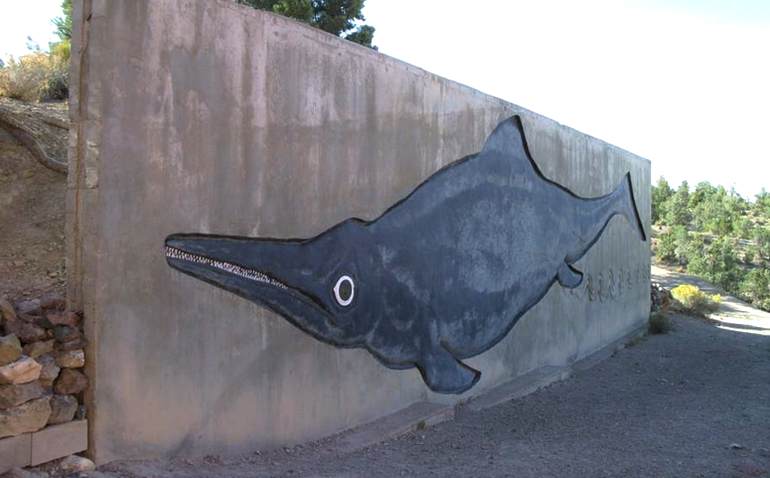
The Ichthyosaur Fossils
The Park is renowned for its impressive collection of ichthyosaur fossils, particularly those of Shonisaurus popularis, which is recognized as Nevada’s state fossil. These ancient marine reptiles lived during the Late Triassic period and inhabited a warm ocean that once covered the area. The first fossils were discovered in 1928, and approximately 40 ichthyosaur specimens have been found. Several skeletons were left in situ and can be viewed in the Fossil House. This fossil area has been designated a National Natural Landmark, highlighting its scientific importance.
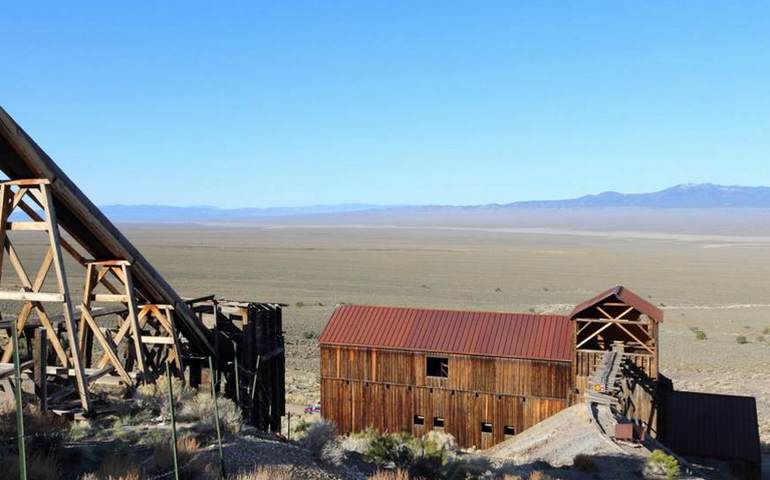
Berlin-Ichthyosaur State Park Campground
The campground is a no-frills setup with 14 campsites, each carved out of the sagebrush and pinyon-juniper landscape. The sites are well-spaced and can handle tents or RVs up to 25 feet long. There are no hookups, though, so you’re dry camping here. Each spot has a covered picnic table, fire ring, and BBQ grill—simple, functional stuff for a night under the stars. The campground is first-come, first-served unless you snag a reservation online, which costs around $20 per night.
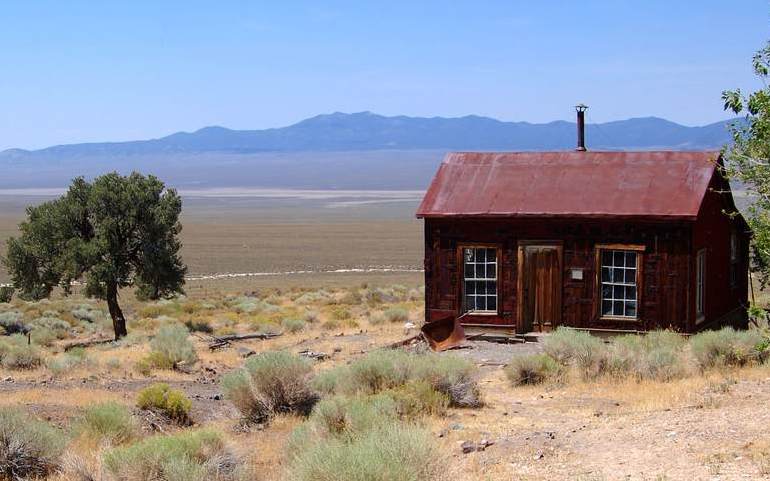
Wildlife and Landscape
The Park’s landscape is as striking as its history. Elevation ranges from 6,840 to 7,880 feet, with hillsides covered in big sagebrush (Nevada’s state flower) and upper slopes dotted with pinyon pine and Utah juniper. Wildlife is abundant, including mule deer, black-tailed jackrabbits, cottontails, western bluebirds, pinyon jays, chukar partridge, and various lizards and snakes (including rattlesnakes, so caution is advised on trails).

Getting to Berlin-Ichthyosaur State Park
From Fallon, go east on Highway 50 until Middlegate, then head south toward Gabbs, Nevada. Turning back east again to head towards Brunton Summit and down into Berlin. The final miles to Berlin-Ichthyosaur State Park are not paved and may not be passable during rain or snow. The Park is open 24/7, year-round, though extreme weather can affect accessibility, especially in winter. Day-use fees are $5 for Nevada residents and $10 for out-of-state vehicles. Visit the park website.
Nearby Points of Interest 40-60 Miles Out
Spencer Hot Springs (50 miles northeast)
Spencer Hot Springs is located in a remote area, so it’s unlikely that you’ll have to share the tubs with anyone except for some wandering burros. These hot springs are semi-developed, with natural thermal water channeled into old livestock watering tanks. There are two sets of pools available for use. The hot thermal water source is enclosed to ensure safety and prevent injuries from the scalding water.
Stokes Castle (45 miles northeast, near Austin)
Stokes Castle is located on a hill overlooking the town of Austin, Nevada. This unique three-story stone tower was built in 1897 by wealthy mining magnate Anson Phelps Stokes as a summer retreat. The castle was abandoned just a few years after its completion. It is currently fenced off, but visitors can walk around it to take photographs. Austin is a semi-abandoned mining town featuring several antique shops and cowboy bars.
Nevada and California Ghost Towns
- 132
- 135shares
- Like
- X
- Digg
- Tumblr
- VKontakte
- Buffer
- Love This
- Odnoklassniki
- Meneame
- Blogger
- Amazon
- Yahoo Mail
- Gmail
- AOL
- Newsvine
- HackerNews
- Evernote
- MySpace
- Mail.ru
- Viadeo
- Line
- Comments
- SMS
- Viber
- Telegram
- Subscribe
- Facebook Messenger
- Kakao
- LiveJournal
- Yammer
- Edgar
- Fintel
- Mix
- Instapaper
- Copy Link
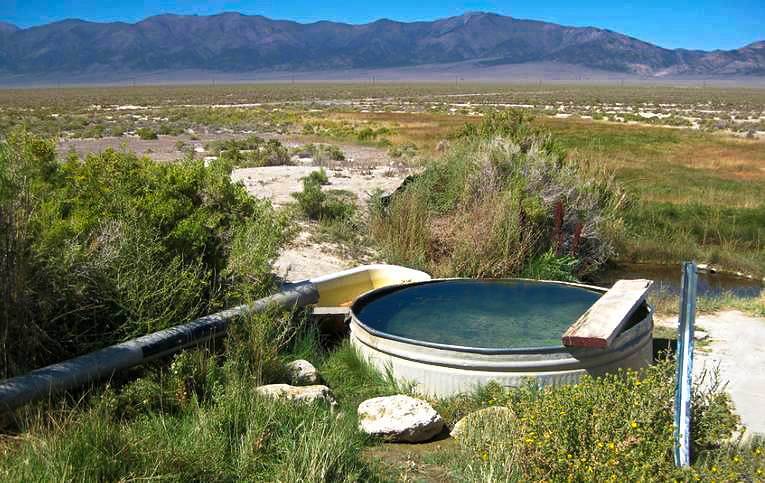
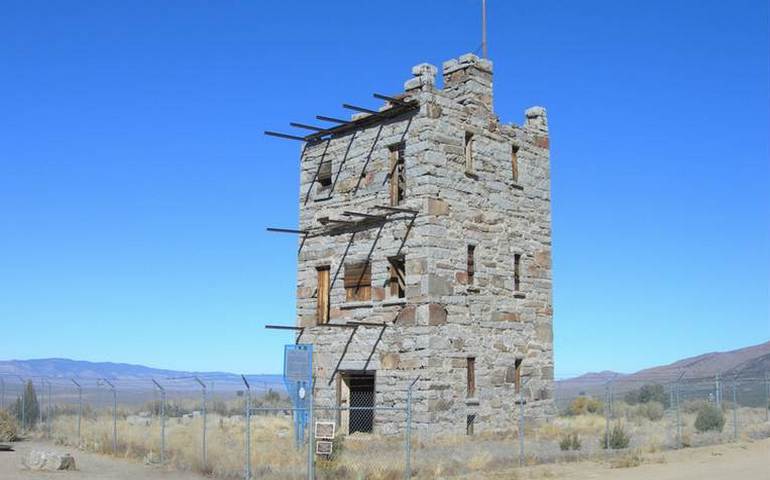
Explored all of these areas and was amazed at the evolution of this desert! While exploring all of this area and to try to imagine that at one point, all of this hot, dry Earth, was completely under water!! I have found fresh water brain coral, and a fossilized palm tree in another part of the desert. Just another example of the changes of our Earth’s surface thru time. What will be under water, or dry ocean floors exposed to a dry desert environment in the evolution of our planet? It is a natural cycle of our Earth. We can’t stop it or change it. It is evolution!!